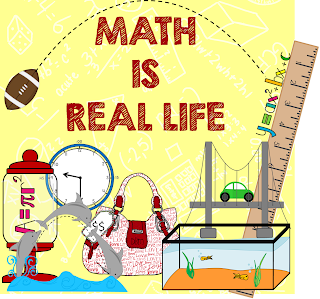Shake Up Learning Book
When I am looking for resources and inspiration, Kasey Bell at shakeuplearning.com is definitely I place I go! I was lucky enough to be chosen to be part of Kasey's Book Launch team, so I got a chance to read the Shake Up Learning Book early! My digital draft is highlighted on almost every page and I have tweeted a bunch of my favorite quotes. I even posted some booksnaps on twitter and wrote an Amazon review.
I wonder ...what more could I say?
Well, I guess there's a few things…
The first thing is that I really love this book. It aligns with my philosophy that technology is not out to replace good pedagogy, it's there to enhance it and take it to a new level. Sometimes tech is not the answer. Student engagement, i.e. dynamic learning, should always be at the forefront. If technology helps with that, then that's great. If not, that's fine too. As my role as an instructional technology specialist, I am charged with finding and curating the strategies and activities that will give my teachers the most bang for their buck. And I really liked seeing that on the first page of chapter 1 in this book. And I love it when she said “Don't forget about good pedagogy when using tech. Blend the two for maximum benefit!”
Another thing I could share are my takeaways. One of my takeaways is that teacher professional development needs to move into the 21st century and allowed teachers a lot more choice. I'm trying to incorporate choice in the professional development that I offer at my campus and I know that my district is trying to move in that way as well. I think one hurdle we still face is that teachers associate professional development with sitting in a room and listening to a speaker. But in real life, that's not the case. My professional development ranges from YouTube (when I watch a video about using a new-to-me tech tool) to blogs (reading about lesson ideas or engagement strategies) and even Twitter (to see what's happening in the education world). And it is my job to help them see the shift, by modeling other PD strategies (that they could even use in their classroom)!
Another one of my takeaways is that curiosity and creative thinking need to be nurtured. I know that as educators we know this, but when faced with list of standards and a looming standardized test date, sometimes that creative thinking and curiosity takes a backseat to making sure our students understand what they're supposed to know so that they can do well on some tests. This is something I have started to work on in my school and it will be one of my main focuses moving forward.
I wonder ...what more could I say?
Well, I guess there's a few things…
The first thing is that I really love this book. It aligns with my philosophy that technology is not out to replace good pedagogy, it's there to enhance it and take it to a new level. Sometimes tech is not the answer. Student engagement, i.e. dynamic learning, should always be at the forefront. If technology helps with that, then that's great. If not, that's fine too. As my role as an instructional technology specialist, I am charged with finding and curating the strategies and activities that will give my teachers the most bang for their buck. And I really liked seeing that on the first page of chapter 1 in this book. And I love it when she said “Don't forget about good pedagogy when using tech. Blend the two for maximum benefit!”
Another thing I could share are my takeaways. One of my takeaways is that teacher professional development needs to move into the 21st century and allowed teachers a lot more choice. I'm trying to incorporate choice in the professional development that I offer at my campus and I know that my district is trying to move in that way as well. I think one hurdle we still face is that teachers associate professional development with sitting in a room and listening to a speaker. But in real life, that's not the case. My professional development ranges from YouTube (when I watch a video about using a new-to-me tech tool) to blogs (reading about lesson ideas or engagement strategies) and even Twitter (to see what's happening in the education world). And it is my job to help them see the shift, by modeling other PD strategies (that they could even use in their classroom)!
Another one of my takeaways is that curiosity and creative thinking need to be nurtured. I know that as educators we know this, but when faced with list of standards and a looming standardized test date, sometimes that creative thinking and curiosity takes a backseat to making sure our students understand what they're supposed to know so that they can do well on some tests. This is something I have started to work on in my school and it will be one of my main focuses moving forward.


Comments
Post a Comment